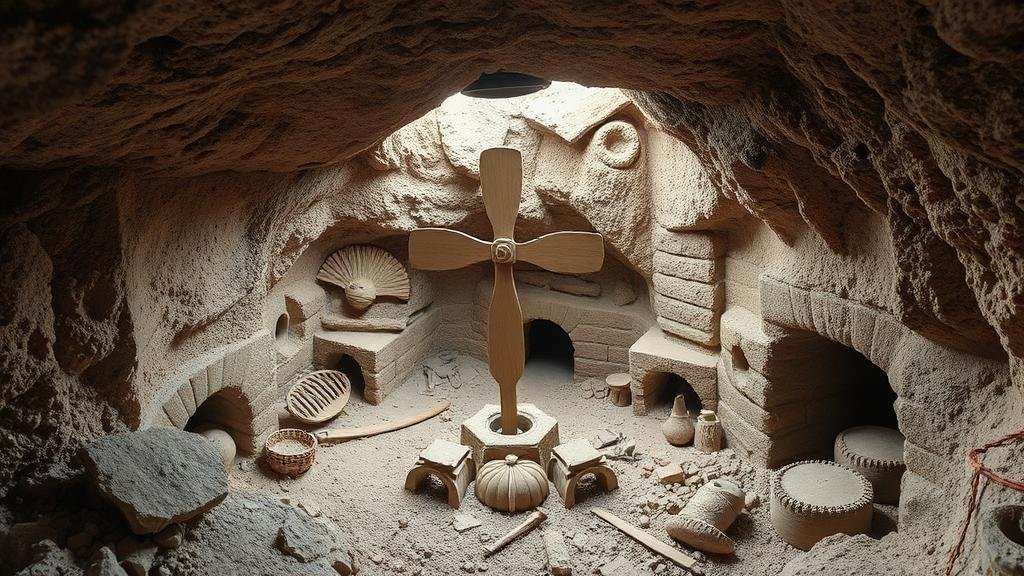Rediscovering forgotten mine shafts filled with relics from lost civilizations.
Rediscovering Forgotten Mine Shafts Filled with Relics from Lost Civilizations
Throughout history, mine shafts have served as gateways to the earths treasures, but many have become forgotten remnants of past industrial booms. Today, adventurers and historians alike are turning their attention to these abandoned sites, unearthing not only minerals but also artifacts from lost civilizations. This article explores the significance of forgotten mine shafts, the fascinating relics discovered within them, and the stories these finds unveil about human history.
The Importance of Mine Shafts in History
Mine shafts have a storied history in various regions around the world. California Gold Rush of 1849 led to extensive underground mining operations, while the copper mines of Michigans Upper Peninsula were crucial during the Industrial Revolution. In many cases, these mines encapsulated not only the resources extracted but also the culture and stories of the people who worked them.
- California Gold Rush (1848-1855): This period saw over 300,000 people flock to California in search of gold, leading to a variety of mining methods, including shaft mining.
- Silver Mines of Nevada: The Comstock Lode, discovered in 1859, was one of the first major silver discoveries in the United States, significantly impacting the economy and settlement patterns.
Unearthing Relics: What Lies Beneath
As researchers and explorers venture into these old mine shafts, they often find artifacts that shed light on past cultures and interactions. From tools and machinery to everyday items, these relics can provide invaluable insights into the lives of those who have come before us.
- Mining Tools: Shovels, picks, and candle holders are common finds, illustrating the methods of extraction used by miners.
- Personal Items: Items such as clothing, eyeglasses, and even personal letters serve as poignant reminders of individual stories and lives.
- Indigenous Artifacts: In some locations, mine shafts have revealed tools and art from local Indigenous cultures, highlighting the long history of human settlement.
Notable Discoveries and Their Impact
Several key discoveries have brought global attention to the significance of mining sites as archaeological treasure troves. One such notable site is the historic Bodie State Historic Park in California, which was a booming gold mining town in the late 1800s. Today, abandoned mine shafts around Bodie have yielded countless artifacts, providing researchers with a glimpse into the lives of its bustling community.
Another striking example comes from the La Sal Mountains in Utah, where forgotten mine shafts were found to contain mining tools and even remnants of Native American pottery. These discoveries illustrate the intersection of different cultures and historical timelines within the same geographical areas.
The Future of Mine Shaft Exploration
Exploring forgotten mine shafts has become a growing field of study, merging archaeology, history, and environmental science. But, it also poses certain challenges. Many shafts are dangerous due to structural instability and the presence of toxic substances such as asbestos and heavy metals. It is crucial that exploration is undertaken with proper safety measures and permits.
- Environmental Impact: Researchers must consider the ecological effects of exploration and work to minimize disturbances to existing habitats.
- Preservation of Artifacts: Proper methods for excavating and preserving found relics are vital to ensure these artifacts can be studied and displayed for future generations.
Conclusion: Insights from the Depths
The rediscovery of forgotten mine shafts filled with relics from lost civilizations is both an exciting and illuminating venture. e sites hold treasures not merely of gold and silver but of stories and histories that can educate and inspire us. By understanding the artifacts left behind, we can learn about the societies that came before us and appreciate the resilience and ingenuity of human beings throughout history.
For adventurers and historians, the call of old mine shafts is strong. As excavation technologies advance and explorative curiosity persists, the potential for uncovering new relics from our past remains promising. In a world increasingly consumed by the present, digging into the past may provide the context and understanding we need to build a better future.



